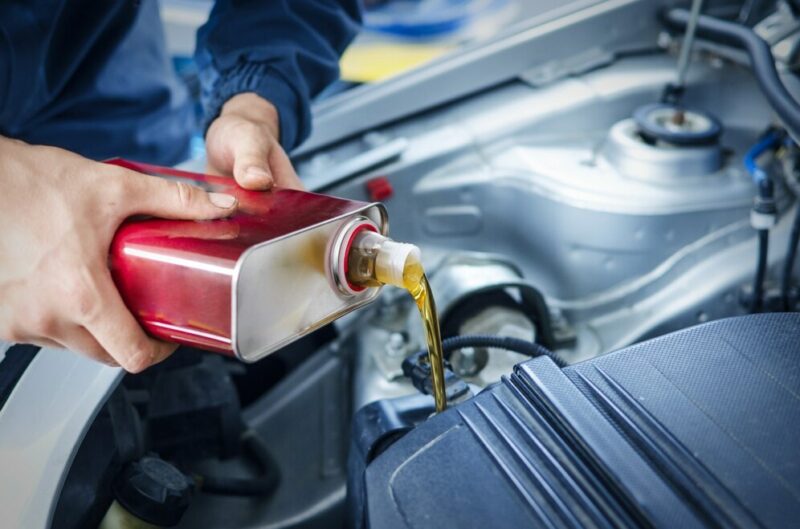When the season changes, many heavy machinery owners face the following question: Do I need to separate engine oils for summer and winter? Some say it’s different, others say it doesn’t really make a difference. With the summer passing, the northern part of the U.S. sees cooler temperatures earlier than the rest. Should I prepare adaptable engine lubricant to cope with the coming cold weather?
To address the question, it’ necessary to figure out how engine oil work. One key engine oil character is the engine oil viscosity. Different engine lubricant viscosity should be applied to different machinery depending on the temperature and workload. Though nowadays, many of the engine oils sold on the market are all-season products, not all models are suitable for them. You should take several crucial factors into consideration before purchasing a specific engine oil. Let’s dive in.
The Role of Engine Oil
Overall, engine oil protects the internal components of the engine’s hardware. A proper lubricant can delay engine wear and prevent unplanned maintenance. The main working principle is to form an oil film between the parts. It could also dissipate the heat generated during operation and maintain an ideal operating temperature. In the meantime, engine oil also does the cleaning job to carry away the carbon deposits and sludge. Its anti-rust properties can protect the metal surface from erosion by moisture and corrosive substances, and its sealing effect helps improve the cylinder’s sealing and combustion efficiency.
What is Engine Oil Viscosity and SAE grade?
All of the aforementioned proper function is based on the viscosity of the oil itself as a carrier, the oil that has no viscosity will lose most of its functions. Engine oil viscosity refers to the thickness or flow rate of the oil, which is a critical factor in how well it lubricates an engine. Every lubricant has a temperature range of optimal performance, which is denoted by its SAE viscosity grade. SAE grades are indicated by numbers (e.g., 5W-30, 10W-40). The first number (or the “W” grade followed by a number, like 5W or 10W) represents the oil’s viscosity at cold temperatures. The second number indicates the oil’s viscosity at high temperatures, typically when the engine is running.
The industry favors low-viscosity engine lubricants now. It is intended to allow the lubricant to flow more freely and provide a higher level of power while the machinery runs with less energy. Thus lower viscosity oils like 5W-30 and 10W-30 ones have a wider compatibility. With strong high-temperature performance and oxidation resistance, are also better adapted during the hot summer season.

Should I Replace the Engine Lubricat Before Winter?
According to the physical property of the oil, when the temperature is low, the kinematic viscosity will increase, which will cause difficulty in starting the vehicle or increase fuel consumption. When the temperature is high, the kinematic viscosity goes the opposite, resulting in a short life of the engine oil. Therefore, in winter, the kinematic viscosity of the engine oil should generally be thinner. As for summer, it is necessary to choose a higher kinematic viscosity, and the engine oil looks thicker.
It’s the general advice of lubrication choice. But the following facts can help you make a better judgment.
Vehicle Use Condition
If your machinery is rather old and well-used, then the popular low-viscosity solutions won’t cut it for your equipment. If the wear is serious and the gap between the components is large, low-viscosity oil is easy to scurry to form carbon deposits, which is difficult to meet the full lubrication. Consider raising the viscosity level of the engine oil, for example, if you used to use 30 engine oil, you could now choose 40 engine oil.
Heavy Workload
High-viscosity lubricants apply to vehicles that frequently run up and down slopes and those frequently back up short distances to pull heavy loads. For those heavy-load machinery, the extreme pressure on the rotating parts is rather high. So you should use a high-viscosity oil to minimize the risk of film breakage.
Extreme climate change
If the temperature difference in your area does not vary much throughout the year, then you don’t have to worry about lubricant seasonal change. But if you are living in northern areas such as Chicago or Canada, it’s good for you to be aware of the cold winter damage to oil. Colder climates require lower viscosity grades of engine oil to ensure proper and adequate oil flow. And to protect critical key engine components, especially during cold starts. Lower viscosity oils are able to move around the machine at a faster rate, keeping components properly lubricated and reducing starting loads.
Conclusion
To conclude, whether you should 2 sets of oil solutions depends on several factors including poor machinery conditions, heavy workload, and extreme weather changes. If your machinery is well-maintained under a relatively normal workload, and the area you live have a cozy weather condition, all-season engine oil could save you trouble.
If you have any needs in aftermarket engine spare parts or heavy equipment repair notes, welcome to visit FridayParts.com. We are a professional off-road aftermarket parts online supplier, focusing on providing high-quality parts at lower prices.
